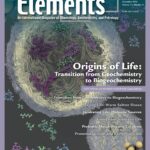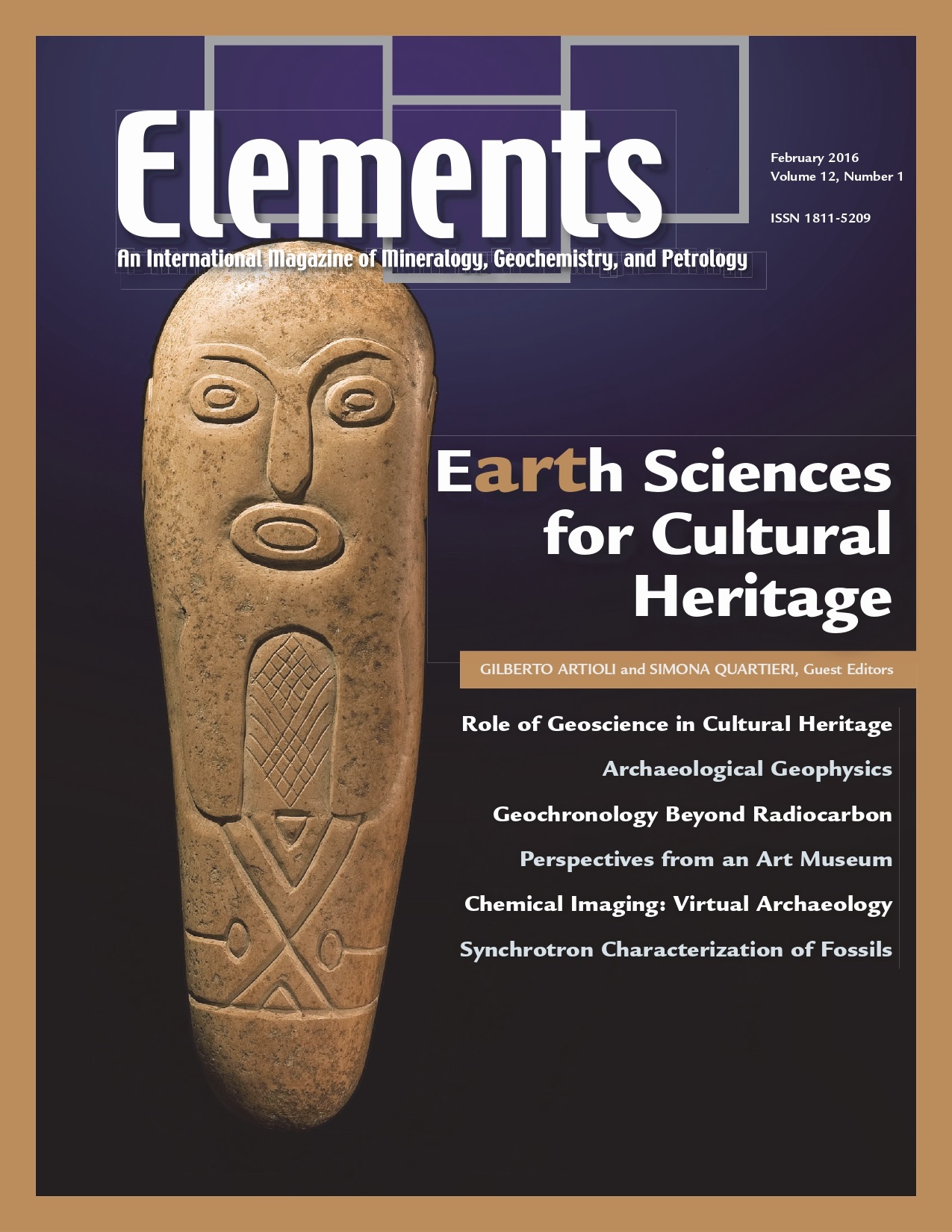
Geomicrobiology And Microbial Geochemistry, December 2015, Vol. 11, No. 6
June 28, 2024
Origins Of Life: Transition From Geochemistry To Biogeochemistry, December 2016, Vol. 12, No. 6
June 28, 2024Earth Sciences For Cultural Heritage, February 2016, Vol. 12, No. 1
$20.00
Archaeometry and conservation science are connected to the geosciences in three ways. Earth scientists can perceive the complexity of natural materials and of the artifacts produced by human activities, they understand the geological and physico-chemical processes acting on them, and they have a mastery of the techniques used to investigate heritage materials at different scales.
Earth Sciences For Cultural Heritage
February 2016, Vol. 12, No. 1
Archaeometry and conservation science are connected to the geosciences in three ways. Earth scientists can perceive the complexity of natural materials and of the artifacts produced by human activities, they understand the geological and physico-chemical processes acting on them, and they have a mastery of the techniques used to investigate heritage materials at different scales. Many techniques can be applied non-invasively, preserving the integrity of art/archaeological objects that are often characterized by uniqueness, fragility, high complexity, and heterogeneity. The goal is to understand the fine interplay between human activities, georesources, and natural processes: in short, the history of mankind and human societies on Earth. This issue uses selected examples to demonstrate how the geosciences offer a way to better understand, interpret, and preserve our past.
Why You’ll Love Elements Magazine:
- Expert Contributors: Articles written by renowned researchers in the field of geoscience.
- Engaging Content: Join a community of readers who are passionate about Elements.
- Exceptional Quality: Each issue is printed on high-quality paper with stunning visuals and detailed illustrations that bring complex scientific concepts to life.
Order your copy of the February 2016 issue of Elements magazine today and explore earth sciences for cultural heritage.
Related products
-
Water On Mars, June 2006, Vol. 2, No. 3
$20.00During the past several decades, spacecraft data have transformed the planets from astronomical objects into geologic worlds. Mars is the current focus of planetary exploration, and NASA’s objectives for this effort are based on the theme, “follow the water.
-
Nanogeoscience, December 2008, Vol. 4, No. 6
$20.00At first glance, nano and Earth seem about as far apart as one can imagine. Nanogeoscience seems to be a word connecting opposites.
-
Frontiers In Textural And Microgeochemical Analysis, August 2007, Vol. 3, No. 4
$20.00Recent advances have been made in high-resolution in situ methods to image mineral growth patterns, analyse compositional and isotopic zonation, and improve our ability to visualize, study, and model rock textures in three dimensions. These advances provide a significant step forward in the understanding of how rocks form and the history they can tell us.




